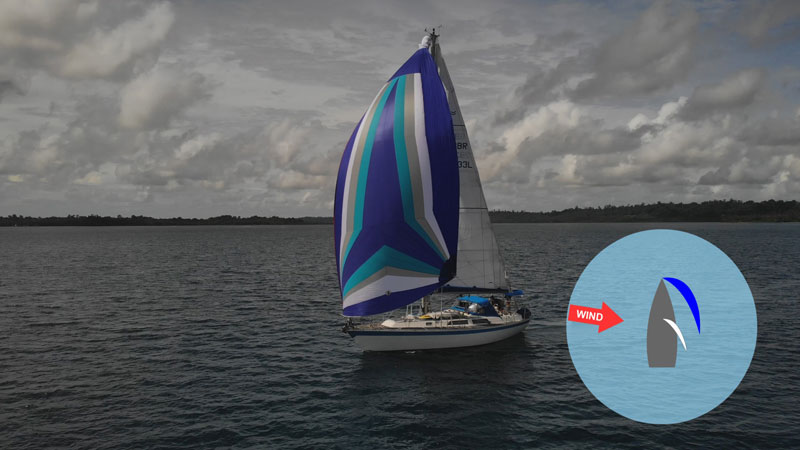
Få utnyttet din Gennaker.
Enkle metoder for Heising, tagning og spri seilet.
For many cruising sailors, the asymmetrical spinnaker is actually their favourite sail. This also applies to long-term world voyagers Amy and Matt.
They are currently sailing in Asia and have produced this great video for us. It is full of really good tips on how to get the best out of your asymmetrical spinnaker without any of the hassle or stress so many secretly fear.
After watching this video, you will much better understand this fantastic sail and how to handle it in a relaxed and easy manner.

Hoisting the Asymmetrical Spinnaker
The video shows a clear, step-by-step guide on how best to hoist, trim and drop your asymmetrical spinnaker. For the hoist, these are the main points.

The three corners of a Rolly Tasker Sails asymmetrical spinnaker are clearly marked. Just attach the tackline to the tack of the sail, the halyard to the head and the sheet to the clew. The tackline should be led through a block in front of and outside the pulpit and led back to a cleat or simpson post on deck so that it can be adjusted. The sheet should best be tied onto the sail with a bowline instead of using a snap-shackle. When the sail is flapping, there will be no dangerous hardware flying about, which can hit the rigging or, worse, crewmembers.
Bear off to roughly 160 degrees off the wind and let the main out. You can now hoist the asymmetrical spinnaker in its sock in the wind shadow of the mainsail.

Once the asymmetrical is fully hoisted and the halyard cleated, luff up slightly so that the sail can fill with wind as the sock is pulled upwards.

Trim of the Asymmetrical Spinnaker
The trim of the sail is beautifully shown in the video. And it is very easy indeed. Simply let out the sheet, until the luff of the sail only just begins to curl.
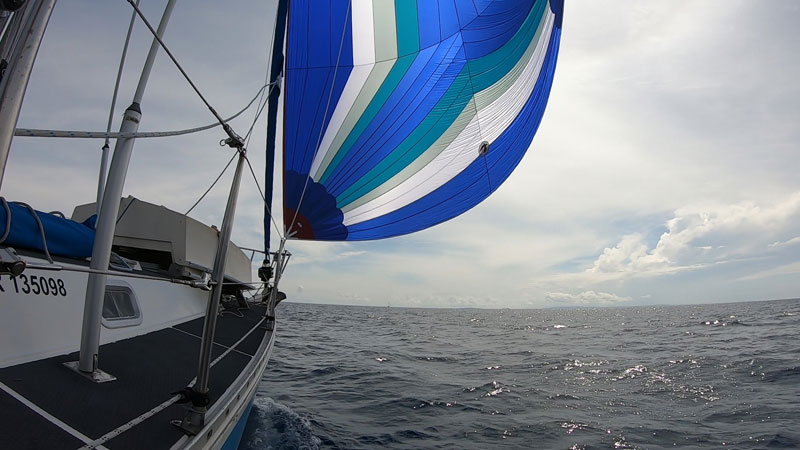
This would be the optimum trim for a race and for concentrated hand-steering. However, for the much more relaxed cruising mode, more often than not running under autopilot or self-steering system, just sheet in a bit more to allow for slight inaccuracies in steering.

As the video will show you, the best wind-angles for the allround cruising asymmetric spinnaker are between 80 and 120 degrees off the apparent wind. In other words, from just forward of the beam to a broad reach.
Using the spinnaker pole
However, there is a trick if you want to steer even further downwind. This would be a course more suitable for a conventional, symmetrical spinnaker. There is a good way of adapting your asymmetrical for deep downwind sailing, again as beautifully shown in the video.
When sailing downwind, the asymmetrical spinnaker will get blanketed by the mainsail. This is the effect that we use to our advantage when hoisting or dropping the sail. But now we want the sail to be as effective as possible.

To be able to pull the sail clear out of the wind-shadow created by the mainsail, we use the spinnaker pole. Because the asymmetrical is cut with a very low tack, the pole has to be set on the mast as low as possible. When the pole is set, we can run a new sheet, the guy, through the outboard end of the pole and to the tack line, where it can be clipped on (this is demonstrated very well in the video).
The pole can then be trimmed, pulling the sail out to the “windward” side. The three lines – guy, tackline and uphaul of the pole – can fix the pole in a stable position.
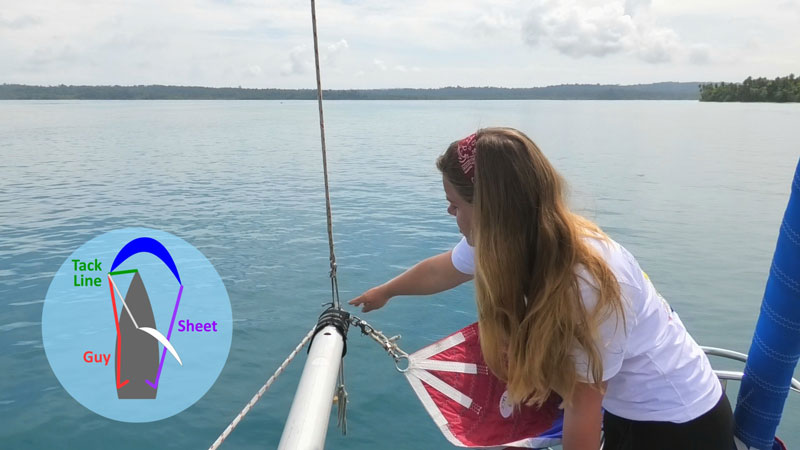
To prevent the aft leech of the sail from swaying too much and to stabilize the sail even more, a trim-line to the sheet will do the trick. The “Tweaker” as it is called by Amy and Matt is easily attached with a snatch-block. It is used to pull the sheet down and thus stabilize the sail. Again, this is clearly shown in the video.
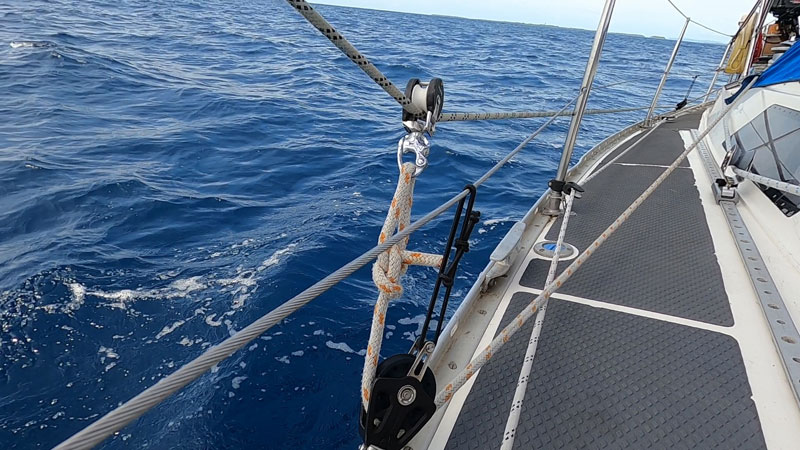
Dropping the Asymmetrical Spinnaker
As you will be able to see in the video, this is a straightforward process. To begin, bear off until the sail is blanketed from the wind by the mainsail. Then, let out the sheet until there is no wind at all left in the asymmetrical spinnaker. Finally, pull down the sock over the sail.
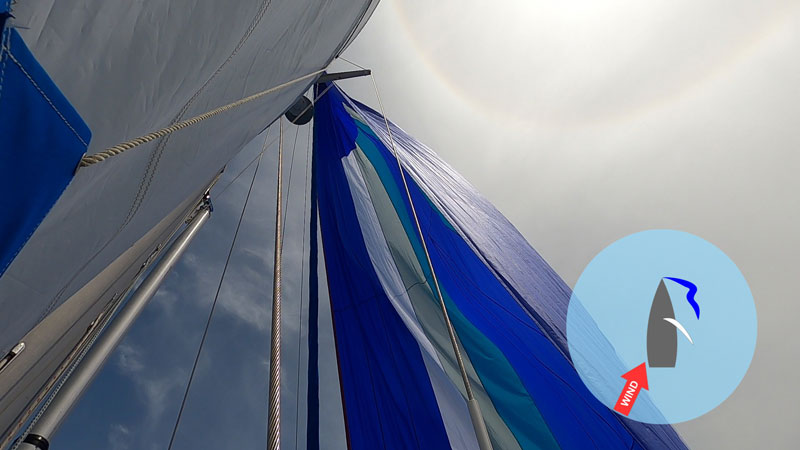
Easy. But here is another brilliant trick by expert sailors Amy and Matt. Pulling the downhaul line of the sock down when standing on deck is actually not very secure. It is much better to lead the downhaul line through a ratchet-block on deck. Pulling the line from the block upwards is much easier. You can do this while sitting down on deck which is so much safer, especially if a sea is running. Finally, the ratchet block will help you to safely hold on to the downhaul even if a gust of wind should find a bit of sail. If you were standing on deck and holding onto the line as it comes down, this would have the troubling effect of wanting to pull you off the deck!
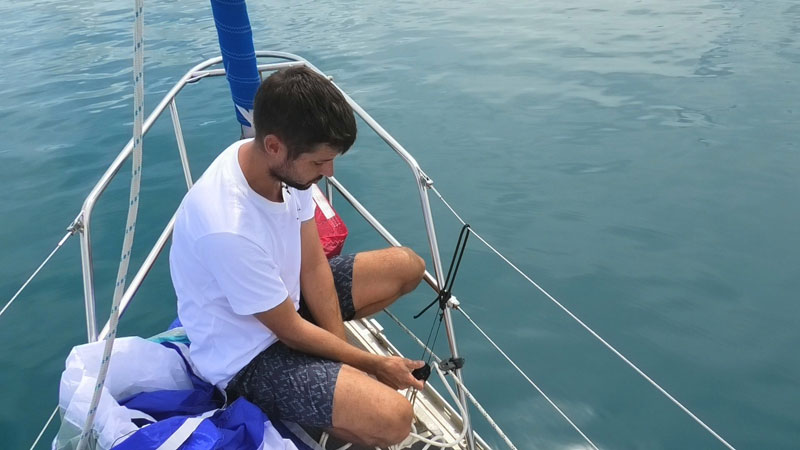
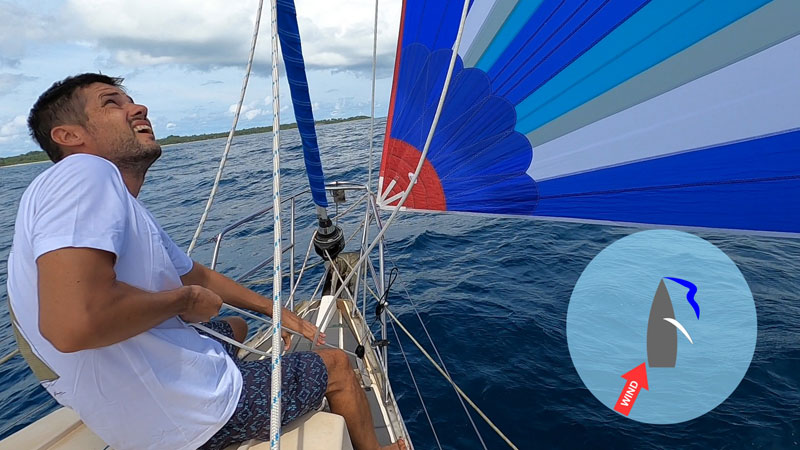
Enjoy!
We hope that you will enjoy this video. But even more, that you will feel confident to use this extra sail to generate more speed, and much more fun, in your own sailing. And that you will enjoy that even more!
If you wish to follow Matt and Amy’s voyages, have a look to their youtube channel Sailing Yacht Florence

